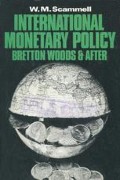Abstract
Bretton Woods in its varying forms has provided the basic pattern of international payments for almost thirty years. With the rate of change and swift run of events of the post-war period this is a long span to comprehend in its entirety. Indeed it is not even desirable that we should do so. The Bretton Woods system, cast against the shifting background of events, economic and political, has acted different roles, and while there has been continuity, it has been a continuity of style and policy approach. This continuity has been demonstrated partly in the underlying principles which we considered in Chapter 5 and partly in the more or less constant political influences to which Fund government has been subject.1 They have given to the system some of its most characteristic attributes. But external events have also been formative. In this and the following chapter we shall be concerned with the events and transactions of the Fund, as the central institution of Bretton Woods, and for this purpose we divide its life-span into two. During the first period of fourteen years (from 1945 to 1959) the Fund sat out the attenuated period of post-war reconstruction awaiting the establishment of free convertibility of currencies, multilateral trade and the other features of the world in which Bretton Woods was designed to operate. In the establishment of this world the Fund played only a minor role.
Preview
Unable to display preview. Download preview PDF.
Notes
Another factor which may have contributed to the hardening of the American attitude towards Britain was the fact that, since Vinson had become Secretary, the star of Harry White had waned at the Treasury. This enigmatic figure whom Keynes had hoped would be the first Managing Director of the Fund and who, in his last days and for years after his death, was the target for political mudslinging might, with his former influence, have thrown his weight into the scales on the side of sanity. Even the moderation and sobriety of Harrod’s account cannot conceal the impetuous, power-seeking thrust of the American group at Savannah. It was a case of ‘We have the machine. O.K. boys, let’s use it.’ See R. F. Harrod, The Life of John Maynard Keynes (London: Macmillan, 1951) p. 629.
Never surely were fears and presentiment of failure couched in such an elegant speech as in that with which Keynes followed Vinson at the opening of the Savannah Meeting. Keynes’s fear that the Bretton Woods twins would grow up politicians was only too well founded. The curse of the fairy Carabosse upon the ‘Bretton Woods twins’ was this: ‘You two brats shall grow up politicians; your every thought and act shall have an arrière-pensée; everything you determine shall not be for its own sake or on its merits but because of something else.’ J. Keith Horsefield, The International Monetary Fund, 1945–65, vol. I: The Chronicle (Washington: IMF, 1969) p. 123.
See J. Tinbergen, International Economic Integration (New York: Elsevier, 1965) pp. 161–2.
For an excellent account of the Fund’s stand-by arrangements from their inauguration to the end of the sixties see Joseph Gold, The Stand-By Arrangements of the International Monetary Fund (Washington, D.C.: IMF, 1970).
Copyright information
© 1975 W. M. Scammell
About this chapter
Cite this chapter
Scammell, W.M. (1975). The Record of Bretton Woods: the System in Abeyance, 1945–1959. In: International Monetary Policy. Palgrave, London. https://doi.org/10.1007/978-1-349-86171-2_6
Download citation
DOI: https://doi.org/10.1007/978-1-349-86171-2_6
Publisher Name: Palgrave, London
Print ISBN: 978-0-333-18295-6
Online ISBN: 978-1-349-86171-2
eBook Packages: Palgrave Economics & Finance CollectionEconomics and Finance (R0)

